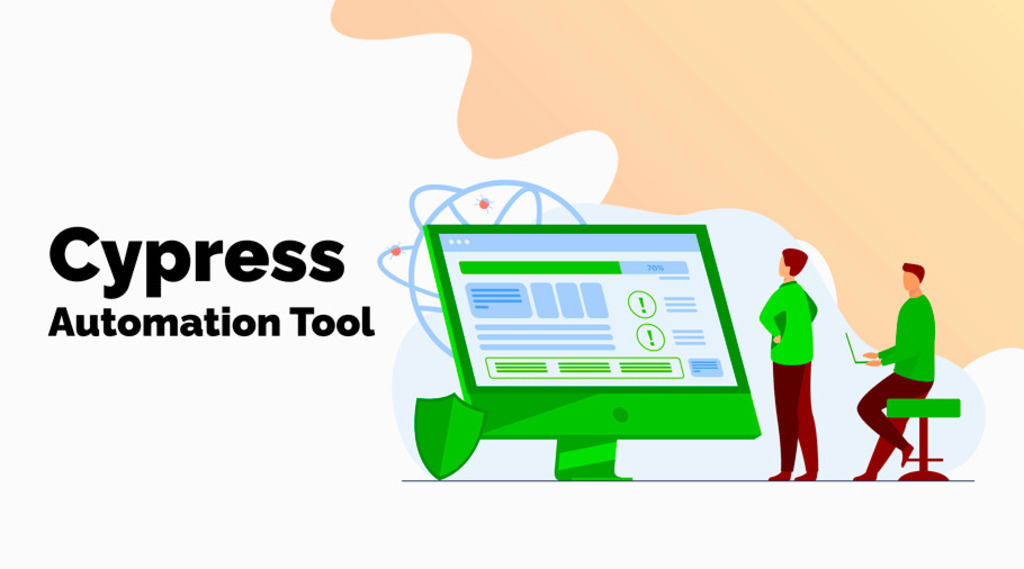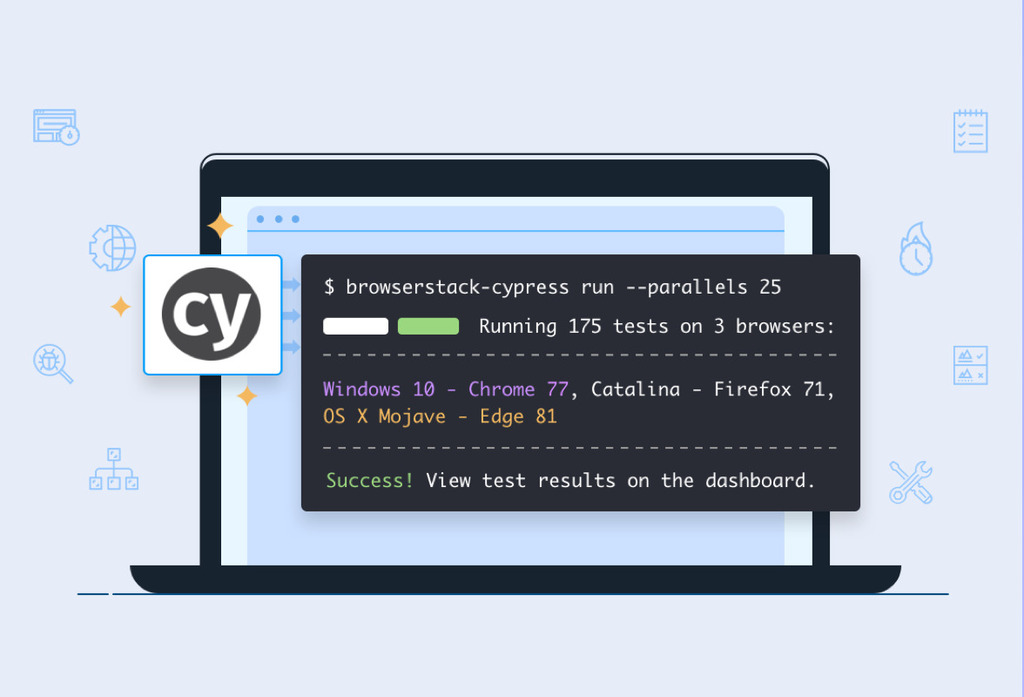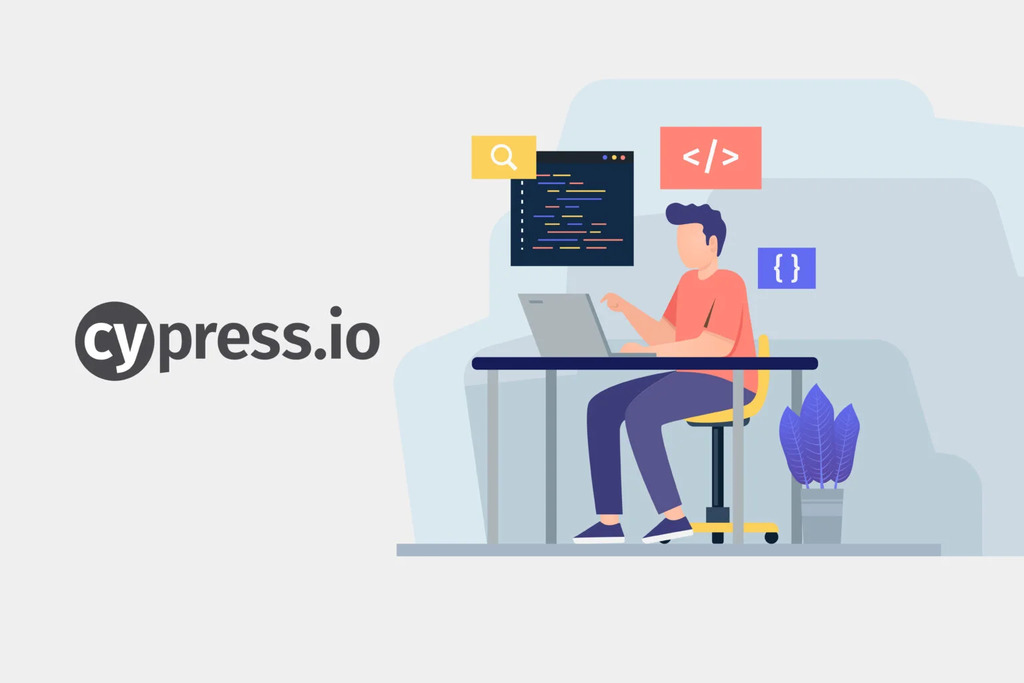Testing is one of the essential parts of an application development process that ensures that all its components are working as expected. It becomes even more critical when developers work on complex apps with thousands of different elements working simultaneously. In such cases, complete human test benches could be more efficient and highly resource-consuming than automated test benches.
Automation test benches can verify the individual performance of the elements and the combined working structure. Some of the common automation testing frameworks include Cypress, Selenium, and Playwright. These tools have unique features and are meant for a specific use case. Cypress and Playwright are relatively new to this market compared to competitors like Selenium.
This article will focus on the Cypress testing automation process and its drawbacks. We will also suggest some of the best ways to help developers prevent the common pitfalls with Cypress-based automation testing. Finally, we’ll discuss some platforms and tools that can simplify Cypress-based automation testing.
Understanding the World of Testing Automation

Source: amazonaws.com
To understand all the components of test automation and its frameworks, the developers must have a general idea of automation testing. To create awareness, we can define this advanced testing process as eliminating human involvement in test cases.
For this purpose, the system will use a text file consisting of all the required parameters or data to initiate and execute the test cases. This data will help the computer to act like a human user and interact with the web application.
Based on the feedback from these interactions, the system will generate a test report showing the stability and usability of the application. The developers can also make all the required changes to the automation test file to make the results suitable according to their testing requirements.
It is also possible to store and reuse the test files in future app projects. However, the massive advantages of automated testing must outweigh the drawback that inevitably comes with this advanced testing process.
This means that while initially getting started with test automation, the developers have to integrate various plugins, libraries, and platforms for the smooth execution of all their automated test cases.
The integration of all these dependencies requires a considerable amount of investment. This investment is often unjustifiable for individual creators and small companies needing more revenue.
So, companies should properly analyze the business perspectives before transitioning to automated testing practices. This analysis will help prevent any unwanted obstacles during the lifecycle of the app development company.
Developing the Required Knowledge of Cypress

Source: medium.com
Cypress is a popular test automation framework for initiating automated test cases on the front-end elements of a web application. The front elements ensure smooth interaction between the system and the users.
Since its initial introduction, Cypress has gained a lot of popularity due to its simple and easy-to-use interface. Moreover, Cypress provides native support for all the elements required for the proper execution of the test cases.
So the developers do not have to go through an unnecessary downloading and learning phase that comes with almost all of its competitors. Moreover, Cypress provides all the documentation on its official website. These documentations also consist of sample test cases demonstrating the working of this framework’s features.
The core framework of Cypress is open source. This means that the developers and testers can access all its features without paying any licensing fee.
This is a significant feature that helps improve this tool’s reach, as it can be accessed by certain developers who still need more resources to invest in their business. Currently, this test automation framework is available on all the popular operating systems like Linux, Windows, and even the Mac.
Cypress application is an open source software whereas the Cypress cloud is available as a web application. So the developers need to choose the correct form of Cypress according to the requirements of the development project.
Common Pitfalls to Avoid in Cypress-Based Test Automation

Source: browserstack.com
Since Cypress is relatively new to the application development industry, much is still being determined about this framework. This lack of information can often lead to unknown surprises and often pause the application development process.
This is a massive drawback considering the competitive nature of the present app market. We have analyzed some common pitfalls that might arise while executing Cypress-based automation testing.
Based on our understanding, the most common solution to these pitfalls is as follows:
- Most companies need more test plans. A test plan helps the developers coordinate all the test cases and ensure they’re executed according to their priority. So, it is essential for app-developing companies to properly create a testing strategy before beginning the process. During the test plan creation, the app company should include the development and testing teams and the business teams. This will help to create general awareness in the company and keep all the teams updated about the current state of the application development process.
- Developers must ensure they have access to all the required browser drivers. If they fail to do so, the test case might show unnecessary errors or might not run entirely. This process can, in turn, hamper the proper execution and production of the application and slow down the delivery stage.
- Experts believe that if the developers use waits in the Cypress automation test files, the test cases might report flaky results. Flaky results are those that end up being false positives or false negatives. The best solution to this problem is the use of Cypress interceptors. This can intercept a call request and help the developers wait for the API call previously intercepted in the test case. This is one of the most critical methods for developers to test a web application’s front-end elements accurately.
- The developers need to avoid any form of unnecessary page reload. This is because whenever Cypress visits a target URL, it reloads the web page to ensure all the changes have been intercepted correctly. According to the official documentation, the developers can use a Cypress-based configuration file in such a scenario. This configuration file will help the developers to make all the changes and set the frequency of reloads. This is a significant feature that massively improves the accuracy and efficiency of the Cypress test files.
- The Cypress test scores are generally tough to read. It becomes even more challenging when the developers are working with this code base for the first time. At first glance, it looks like a jQuery spread. To solve this issue, the developers can use specific custom Cypress commands across all the test cases. The developers working with the typescript programming language can easily reuse these commands while writing a new test file. Moreover, it is also easy to integrate these commands with the core framework of Cypress by overwriting the Cypress chainable interface. By abstracting all methods that the testers mostly use, it becomes straightforward to read and understand the code of selenium.
These were some of the most common pitfalls the developers will witness while working with the Cypress test automation tool. Now let us understand how various platforms and tools can play an indirect role in the smooth execution of Cypress test automation.
Integrating Tools and Plugins in Cypress Automation

Source: terrificminds.com
As mentioned earlier, tools and platforms can massively reduce the complexity of automation test cases, especially when the developers are working with Cypress. These tools are readily available in the market and can also integrate additional features for improving the quality of the overall application development process.
For instance, we can consider the example of cloud platforms that ease the developers by removing the need for a physical test bench while verifying the performance of the applications. This is because, with these platforms, the developers can achieve similar results to a test bench while executing all the test cases on devices over the Internet.
We can improve our knowledge about the influence of cloud platforms by bringing in the LambdaTest understanding point.
LambdaTest is a modern cloud platform for introducing new developers to conduct cross-browser testing on web application development projects properly. Considering the state of the market, we can safely say that cross-browser testing is essential to ensure that the company is providing its best services to its customers.
This is because, with cross-browser testing, the application’s stability can be verified irrespective of changes in browser version, operating system, or the entire device specifications. This platform also has various innovative features like parallel execution of different test configurations to improve testing efficiency.
LambdaTest allows the developers to use Cypress test automation on locally hosted web applications for a company’s internal operations. Besides importing the automation scripts from Cypress, it can also handle the test scripts from other popular frameworks like Playwright and Selenium.
While working with Cypress test scripts, the developers can initiate them over different unique browsers. Moreover, the availability of real device testing along with thousands of simulation software helps improve the accuracy and dependability of the testing processes.
Conclusion
The primary aim of this article was to spread proper awareness regarding the execution of Cypress-based automation testing processes. This is vital information as the grasp of test automation is increasing in the application development market.
So, app developers and companies must arm themselves with the required information to maintain their position in this market segment. It is also crucial for automation testers to keep their knowledge updated as innovations and additions are regularly being made in this segment.
The app companies can also hold frequent seminars, including their development, testing, and business teams to spread the required information and knowledge. Lastly, it is essential to choose the correct tool that can complement the application development practices of the company.










